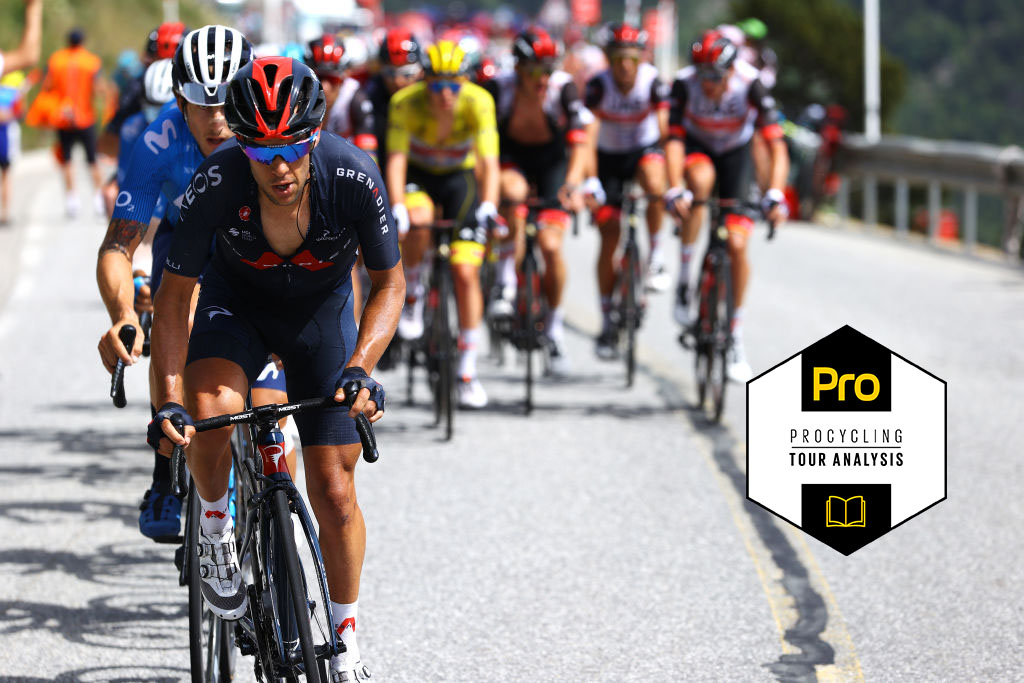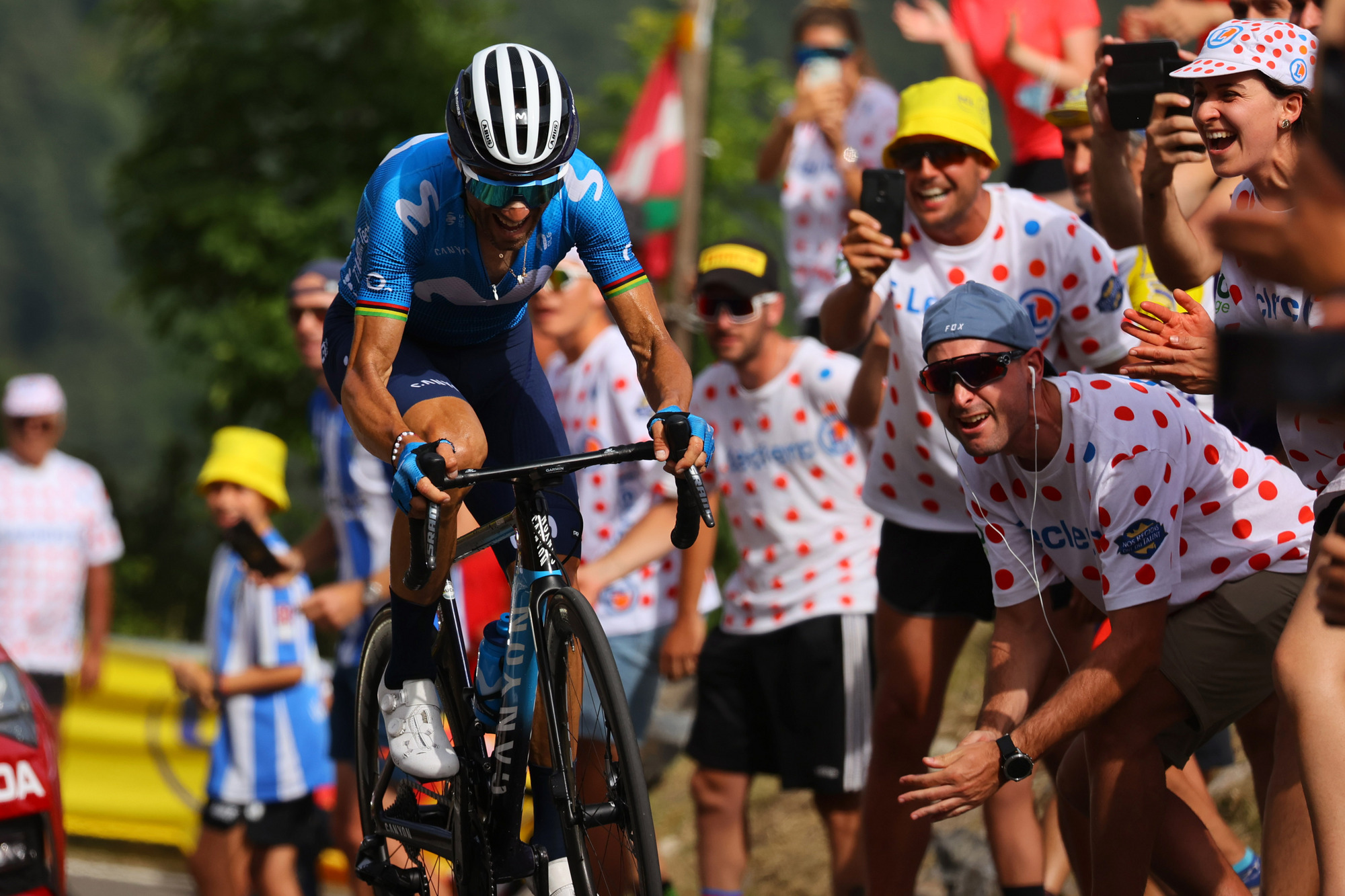Tour de France stage 15 analysis: a team sport for individuals
How team tactics on the first big Pyrenean stage of the 2021 Tour de France shaped the day’s racing

The second law of thermodynamics states that all things tend toward disorder. But nobody told the peloton of the 2021 Tour de France. A race whose opening 10 days were marked by chaos and a lack of control is starting to take on a more predictable shape.
There was a sense of familiarity about stage 15, which took the Tour to Andorra la Vella, and not just because dozens of riders in the Tour peloton live in the principality, including the day’s winner Sepp Kuss (Jumbo-Visma). There was a big move by Movistar on the mid-stage Col de Puymorens which fizzled out when their ideas turned out to be bigger than the physical capacity needed to carry them through. The Ineos Grenadiers set up a mountain train on the same climb. These last two sentences might have been written in any one of the last few Tours. And finally, when all was said and done, there was a stalemate in the GC group in which most of the top 10 could barely be separated – for two mountain stages in a row now, over Mont Ventoux and the first big Pyrenean stage, the same seven or eight riders have been at the front. The 2021 Tour is tending towards its final order.
Order in cycling is imposed generally by strong teams. However, one of the most important aspects of this year’s Tour, one that is having a very influential effect on the way the race is now being ridden, is that coming out of stage 15, the top 11 riders all represent different teams. This is a vanishingly rare thing at the Tour de France – in the history of the event since it definitively became a team race in 1925, there has been only one Tour in which the final top 10 all represented different teams, and that was in 1970. Apart from Tadej Pogačar, those riders are largely very closely matched as well, with second to eighth separated by less than two minutes.
In the run-up to the 2021 race, there was a lot of anticipation about the strength in depth of the Ineos Grenadiers, whose roster counted three Grand Tour winners and a Tour podium finisher, and to a lesser extent Jumbo-Visma. However, between crashes and riders showing poor form, the race has settled into a pattern which is mainly pitting individuals against individuals at the key points. But as every cycling fan knows, road racing is a team sport for individuals, and team strategies and tactics are still having a big influence on the outcome of the race.
A tale of six teams
Though stage 15 finished with the first 12 riders into Andorra representing 12 different teams and the GC in a similar shape, team tactics shaped the entire day, with several teams throwing numbers at various different plans.
The break, as often happens in the mountain stages of the Tour, took a long time to form, and in the end it turned out to be huge, with 32 riders, and 20 teams represented. This could be interpreted as another sign of weakness by UAE Emirates. The Gulf team’s rider Tadej Pogačar may be leading the race by several minutes, but they have struggled to impose the same control on the peloton as Jumbo-Visma did last year and Ineos Grenadiers/Team Sky did through most of the last decade. Every rider in the top 10, save Pogačar, had at least one team-mate in the break, and what’s more, in every case they were strong climbers. Guillaume Martin had his Cofidis team-mate Rubén Fernández, a former Tour de l’Avenir winner. Rigoberto Urán (EF) had Ruben Guerreiro, the 2020 Giro KoM, plus Neilson Powless. Jonas Vingegaard of Jumbo-Visma had three team-mates up there, and we’ll get to that. Richard Carapaz (Ineos Grenadiers) had Dylan van Baarle and Jonathan Castroviejo. And so on. The reason this is significant is that it’s common for riders to attack, while their team-mates drop back from the break, and ride with them to help them gain time. UAE might have preferred for fewer strong allies for Pogačar’s GC rivals.
The most interesting tactics on the day came from Groupama-FDJ, Movistar Ineos, Bahrain Victorious and Jumbo-Visma.
Get The Leadout Newsletter
The latest race content, interviews, features, reviews and expert buying guides, direct to your inbox!
Groupama-FDJ’s only motivation was the stage win. They put three riders in the break – David Gaudu, Valentin Madouas and Bruno Armirail – and the clear strategy was for Gaudu, the best climber in the team, to go for the stage. To this end, they imposed their own version of the mountain train on the break through much of the early climbing. This pulled the break well clear of the peloton, but it was noticeable that the other 29 riders in the group were getting a largely trouble-free ride through the day. The tactic was predicated on Gaudu being the best climber in the group; unfortunately he turned out not to be. When the final attacks went on the Col de Beixalis, he was distanced and finished seventh on the stage, in the group that sprinted for third.
Movistar’s plan for the day was double-pronged, in the best tradition of the team. They had Alejandro Valverde in the group ahead, and he was left to his own devices in going for the stage win. However, as the peloton hit the second-category Col de Puymorens they surged to the front with the aim of thinning out the peloton and laying the ground for Enric Mas, their GC hope, to attack. Their pace did thin out the peloton, but it also thinned out Movistar, and Mas was left isolated very early on. In the end, it probably looked worse than it actually ended – Mas wasn’t the only GC rider left on his own by the top of the Port d’Envalira and he rode well on the Col de Beixalis. He looked stronger than his rivals Ben O’Connor (AG2R Citroën Team), Wilco Kelderman (Bora-Hansgrohe) and Alexey Lutsenko (Astana-Premier Tech) and can take confidence into the final mountain stages. Meanwhile Valverde was second on the stage.

Ineos Grenadiers rode a very clever and ambitious race. They rode with Movistar on the Col de Puymorens, and took over on the Port d’Envalira with Richie Porte, Michał Kwiatkowski then Geraint Thomas destroying the favourites group with the team’s trademark mountain train. At the same time, as Kwiatkowski was giving up the ghost in the final kilometre of the Envalira, Van Baarle and Castroviejo had drifted back from the front group, and were able to take over for the descent on wide, exposed roads. Their timing was perfect and their efforts got rid of Guillaume Martin, second overall at the start of the day, and set up Carapaz to attack on the Beixalis. Ultimately their plan, though clever and well executed, didn’t gain them anything, though Carapaz was consistently one of the three or four best on the final climb. They can break the whole Tour up, but they still haven’t worked out how to get rid of Pogačar, and if it comes to man against man on the final climb, the Slovenian is still the best. Ineos still need to find a solution to this problem.
Bahrain Victorious quietly hatched their own plan for the stage. The team is in first place in the teams classification, and are making it a target. The classification often gets a bad rap from Tour followers, but it has its own demands and tactics. Often the winning team is just the one with the most strength in depth, which is why Movistar have won it so often. They may never have the strongest rider, but their second and third best are often not far behind. However, it’s also possible to be clever about the classification and get riders into the breaks that stay away on stages in which the GC group takes the day off. If the peloton rides in 10 minutes down, and a team has put three riders into the front group, it’s possible to gain up to 30 minutes in the teams classification in one day, and that’s what Bahrain Victorious tried today, with Wout Poels (also going for mountains points and taking the jersey), Dylan Teuns and Matej Mohorič. This meant to a large extent leaving Pello Bilbao, 11th going into the stage, to his own devices, but Bilbao, like many of the GC favourites, is relying simply on following wheels and being up there on the hardest climbs. In the end, Bahrain ended up ceding ground to EF Education-Nippo in the classification – Guerreriro and Powless both stayed away while Urán finished with the other GC favourites – but the idea was a good one, and Bilbao moved up into the top 10, so the day was largely successful.
The most interesting and controversial tactics were those of Jumbo-Visma, however. Jonas Vingegaard was in fourth on the morning of the stage and he’s the only rider to have dropped Pogačar on a climb, at the top of Mont Ventoux. The team only has five riders left, so it was a gamble to put three – Kuss, Steven Kruijswijk and Wout van Aert – into the escape and potentially leave the Dane isolated. On the other hand, with Ineos and Movistar doing the job of thinning out the GC group, and the Port d’Envalira not at all favouring long-range attacks – it’s too much of a grind, and the wind too strong – they might have known that as long as he followed the other favourites, which he’s well capable of doing, he would be fine. The only hitch would have been bad luck, which he avoided. Ahead, Kuss won the stage and Van Aert took enough mountain points to put himself into contention in that classification as well, so while Jumbo looked to be playing with fire, they had a more successful day than anybody. Vingegaard made no inroads into Pogačar’s lead, but with five minutes to make up, he may be starting to think that his real rivals are Urán and Carapaz, for second, rather than Pogačar for first.
The Tour will now have its second rest day, with more of a sense of order than at any other time during the last two weeks. However, if the riders of the Tour think that the race will continue to buck the second law of thermodynamics and continue tending towards more order, they should also be aware of an old physicists’ joke about what the second law actually means in the real world: whatever can go wrong, will.
Edward Pickering is Procycling magazine's editor.
Procycling magazine: the best writing and photography from inside the world's toughest sport. Pick up your copy now in all good newsagents and supermarkets, or get a Procycling subscription.
Edward Pickering is Procycling magazine's editor. He graduated in French and Art History from Leeds University and spent three years teaching English in Japan before returning to do a postgraduate diploma in magazine journalism at Harlow College, Essex. He did a two-week internship at Cycling Weekly in late 2001 and didn't leave until 11 years later, by which time he was Cycle Sport magazine's deputy editor. After two years as a freelance writer, he joined Procycling as editor in 2015. He is the author of The Race Against Time, The Yellow Jersey Club and Ronde, and he spends his spare time running, playing the piano and playing taiko drums.